It's pretty warm in New York right now: 33°C. That's cooler than 38°C, the current official temperature in Chicago, making it the third day in a row that Chicago has gotten that hot:
July's opening 5 days the hottest in 101 years
The month is young—just 5 days old. Yet it's 30.2°C average temperature is 7.3°C above normal and makes it the warmest July open since 1911 when the period averaged 31°C.
Apparently relief is coming with temperatures predicted to fall into the mid-20s (mid-70s Fahrenheit) Sunday.
Despite being in New York, I've actually spent the morning and part of the afternoon completing a project for work. I'm done now, giving me just enough time to run an errand before tonight's Cubs game at Citi Field. Look for photos from the game tomorrow afternoon.
2:15 pm:
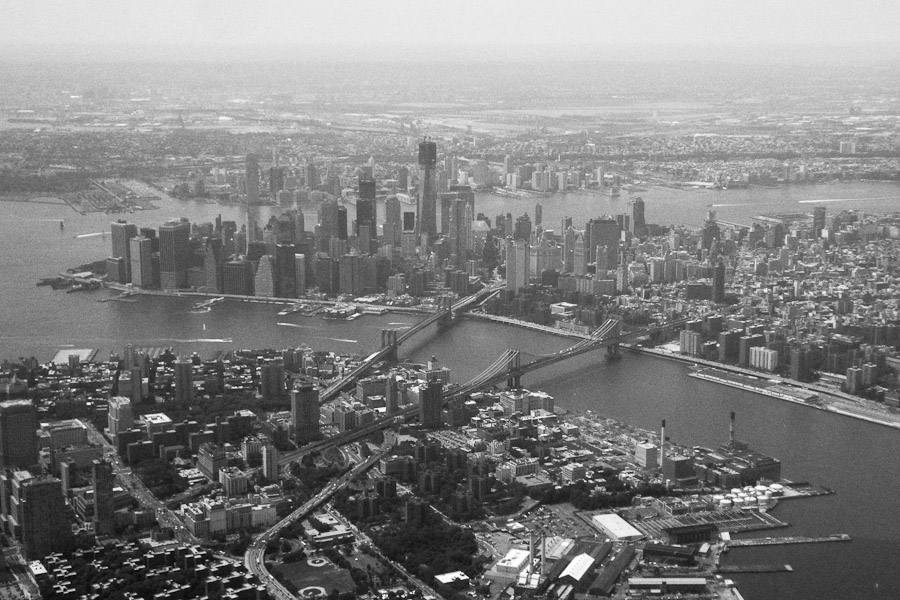
4:10 pm:

And why am I here? That, at 7pm tomorrow:
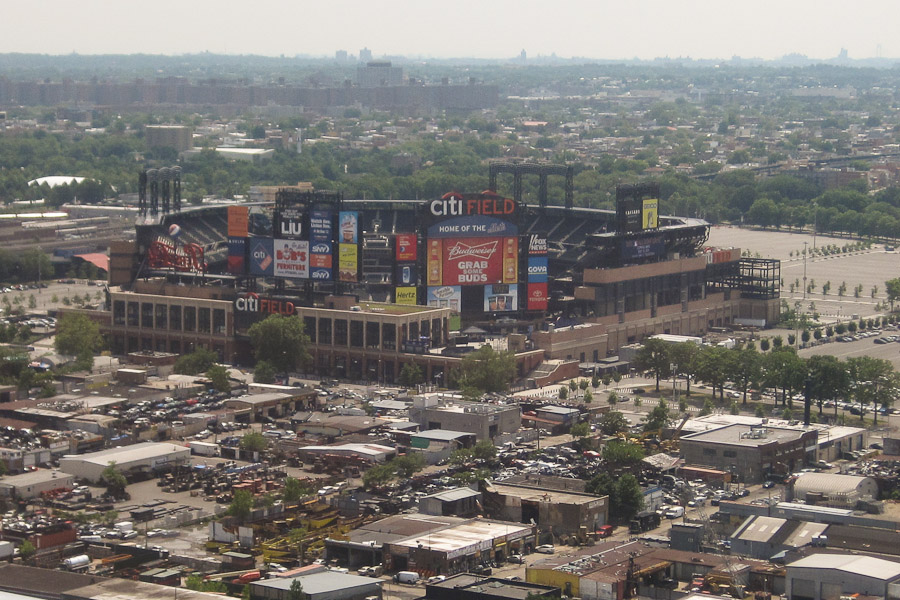
The Atlantic's Max Fisher has a roundup:
Flipping through a few of the many English-language tourist guides provides a fascinating, if non-scientific and narrow, window into how people from the outside world perceive America, Americans, and the surprises and pitfalls of spending time here.
Of the many pieces of advice proffered, four of the most common are: eat with your fingers (sometimes), arrive on time (always), don't drink and drive (they take it seriously here!), and be careful about talking politics (unless you've got some time to spare). But they say more than that.
In many ways, the tour books say as much about the world as they do about the U.S., by highlighting the ways in which American practices and standards deviate. Anyone who's traveled widely, particularly in the developing world, will understand why these books are so emphatic about, for example, punctuality, personal space, and the unreliability of our trains.
All of them, of course, have sections on tipping. It's difficult to overstate how confusing that can be to foreign visitors.
I'm not sure what to make of this:
Inside, the capsule's sole passenger would ride in a near-standing position, wearing a G-suit to help force blood to the head during acceleration. The passenger's head would sit in a transparent hemispheric dome topped with an aerospike for better supersonic performance. It gets better.
Dimensions of the capsule's cabin area are roughly two feet (diameter) by 7.5 feet (length). There will be no room in the capsule for movement once the vehicle goes weightless. After launching to 100 miles, parachutes will be used to slow the final descent.
That sounds...well, "fun" doesn't come immediately to mind.
The bridge opened for foot traffic on 27 May 1937:
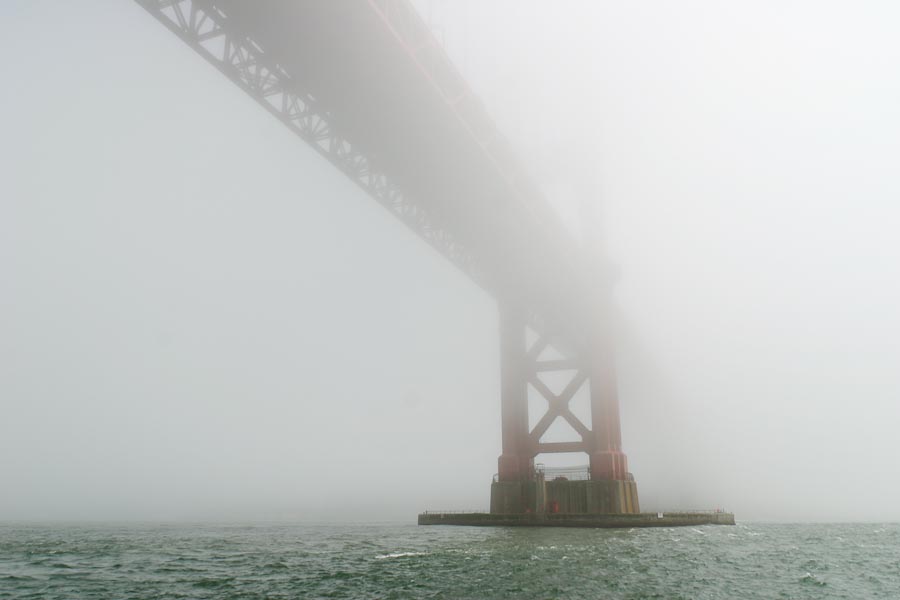
Naturally, the city is having a party.
The last time I flew home from San Francisco, we landed in Rockford after missing the approach at O'Hare because of wind shear.
Yesterday, we didn't divert to a different airport, but neither did we take the most direct path:
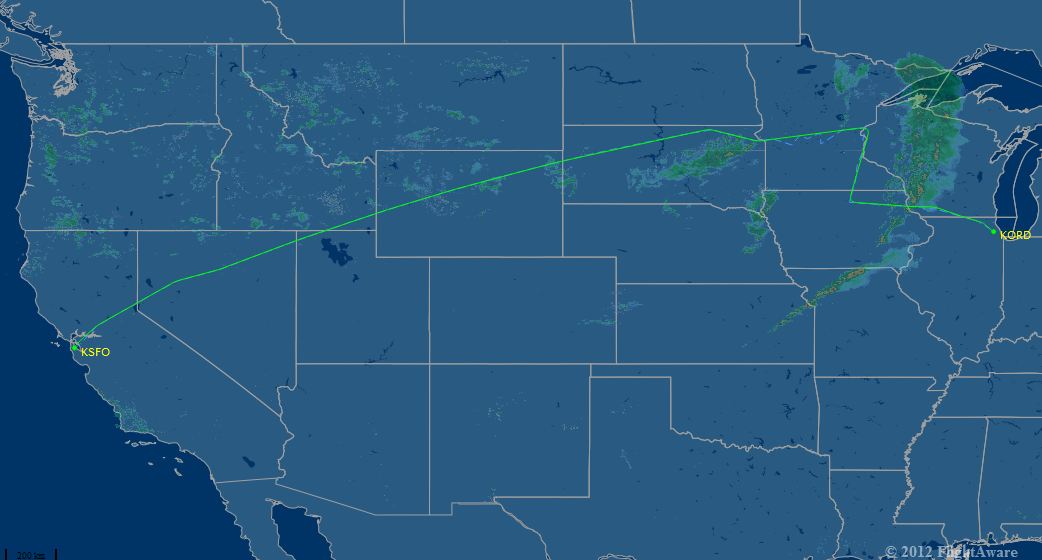
We almost flew into Canada, according to the captain. As it is we were only about 20 minutes late.
I'm once again in an airport, on my way home. While you're waiting eagerly for my next blog post, check these out:
Share and enjoy.
Oh, and there's a Lufthansa Airbus 380 parked here today. I really must see one of those monsters up close someday.
The fog will roll in after noon, but at 7am there wasn't a cloud:
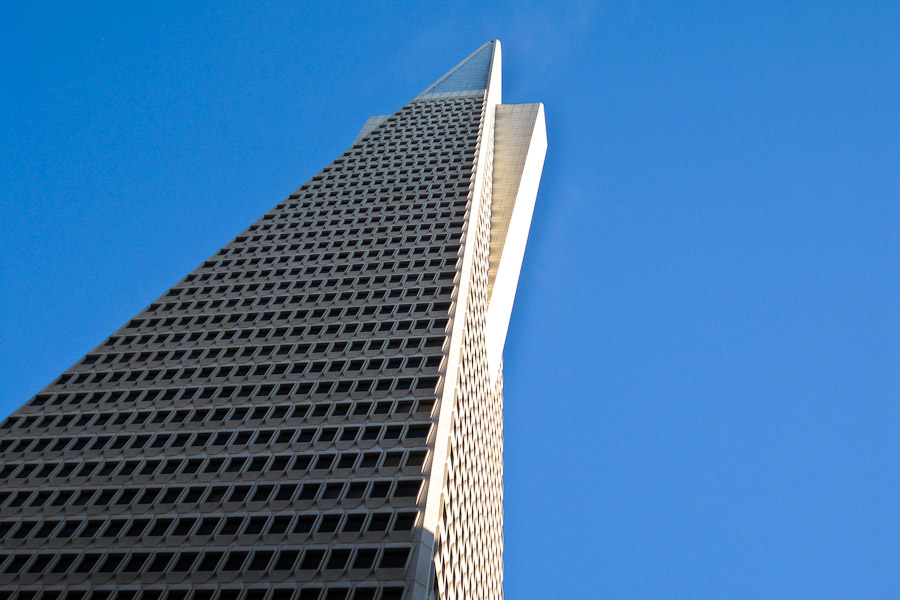
This is my fourth-favorite city in the world.
This evening's eclipse, through clouds:
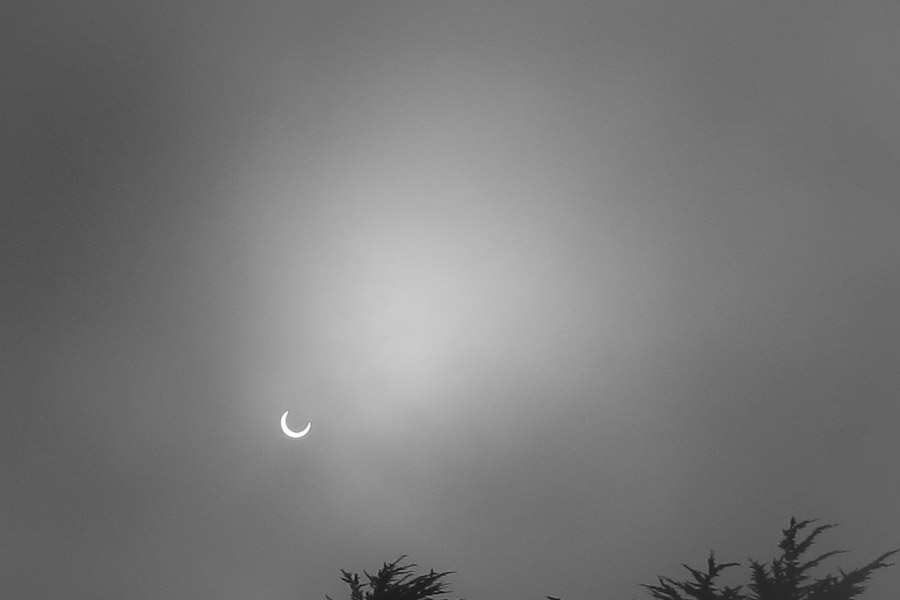
Also visible in the shadows:

An hour later, it's a lot brighter out.
I've never seen this before. Here's the French presidential airplane, parked on the south apron at O'Hare yesterday:
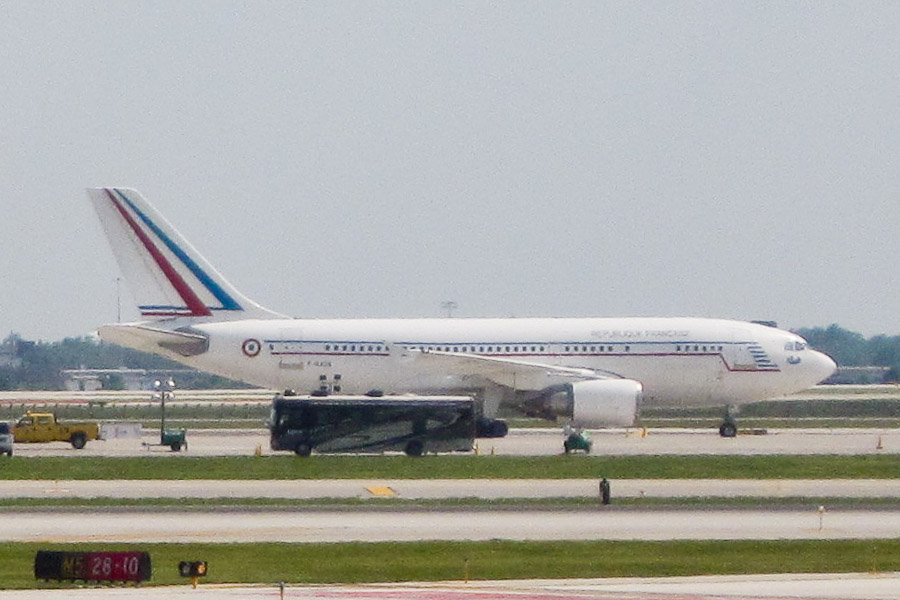
Parked nearby were Azerbaijan's, Italy's, and (I think) Russia's, but I couldn't get good photos with my tiny backup camera.
Let me be an aviation nerd for a second. This is an Airbus 320, without any obvious modifications. So how did it get an all the way here from Paris? I assume it stopped at Andrews AFB in Maryland to drop President Hollande off. But even Paris to Andrews seems like a long flight for that plane. The A320 has a maximum range of 6,150 km. Paris to Andrews is 6,183 km—possible, but risky, as it wouldn't leave any margin for error even after flying as efficiently as possible. Not to mention, flying trans-Atlantic westbound goes against the prevailing winds. So did they stop for fuel somewhere? Or does the plane carry more fuel than the bog-standard air transport model?
I realize this is not the most important aspect of the NATO summit, but I am curious.